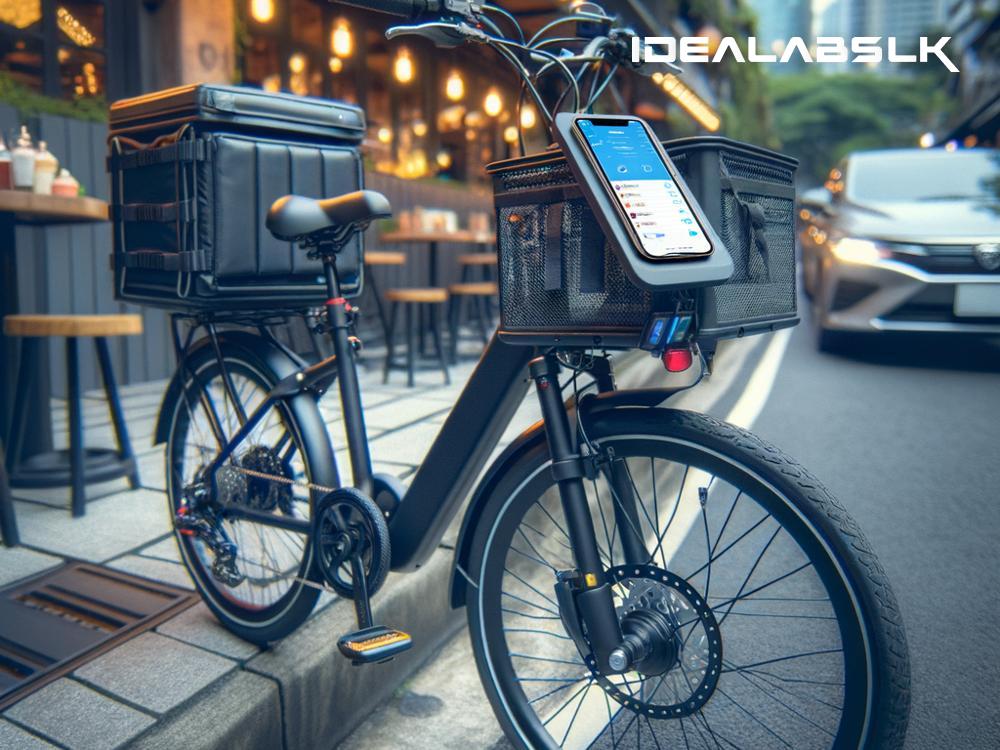AI in Managing Food Deliveries and Reducing Carbon Emissions
In the bustling world we live in, speedy food delivery is something most of us rely on at least some of the time. It's convenient, often affordable, and saves us a trip to our favorite restaurant. However, these speedy deliveries come at a cost much higher than what appears on our bills. The hidden cost is the carbon emissions produced by delivery vehicles, contributing to climate change. But don't lose hope yet! This is where Artificial Intelligence (AI) comes in, swooping down like a superhero to make food deliveries more efficient and eco-friendly. Let's dive into how AI is making a difference.
What's the Deal with Carbon Emissions?
Firstly, it's essential to understand why reducing carbon emissions is crucial. Carbon dioxide (CO2) is a significant contributor to global warming, which leads to climate change. Vehicles, including those used for food deliveries, emit a considerable amount of CO2. By reducing these emissions, we can help protect the environment and slow down the warming of our planet.
AI to the Rescue
Artificial Intelligence, or AI, is technology that enables machines to learn from experiences, adjust to new inputs, and perform human-like tasks. So, how does AI help in making food deliveries greener? Here are some ways:
-
Optimizing Delivery Routes: AI can analyze data like traffic patterns, road conditions, and the distance between the restaurant and the customer to determine the most efficient delivery routes. This means that delivery vehicles spend less time on the road, reducing fuel consumption and, consequently, carbon emissions.
-
Predictive Ordering: AI can predict when and what customers might order based on past order history and trends. This allows restaurants to prepare food more accurately, reducing wastage. Less food waste means fewer trips to the landfill, which helps in reducing greenhouse gas emissions.
-
Vehicle Load Optimization: By analyzing order sizes, delivery locations, and vehicle capacity, AI helps in planning how to load delivery vehicles efficiently. This optimization leads to fewer trips, which again, reduces carbon emissions.
-
Electrification of Delivery Fleet: AI significantly contributes to managing electric vehicle (EV) fleets efficiently. It can determine the best times for charging based on delivery schedules and energy tariffs, and also optimize route planning considering the EV's battery life. This not only cuts down on fuel consumption but supports the shift towards cleaner energy sources.
Case Studies
Several companies are already harnessing AI to make their operations more eco-friendly. For instance, Domino's Pizza has experimented with optimizing delivery routes using AI, aiming to reduce delivery times and vehicle emissions. Similarly, Uber Eats uses AI to forecast demand, helping in the better allocation of its delivery partners and reducing unnecessary travel.
The Bigger Picture
While AI can significantly reduce carbon emissions from food deliveries, it's important to recognize that this is just one piece of the puzzle in the fight against climate change. However, it's a promising start. By supporting restaurants and delivery services that employ such technologies, consumers play a crucial role in encouraging the industry to adopt greener practices.
What You Can Do
As a consumer, you can make choices that support this technological shift towards a more sustainable future:
- Choose Eco-friendly Delivery Options: If a delivery app offers an option that is more eco-friendly, even if it means waiting a bit longer for your order, go for it.
- Support Restaurants Using AI Technologies: Patronize businesses that are making an effort to reduce their carbon footprint through technology.
- Spread the Word: Awareness is key. Share information about eco-friendly delivery options and technologies with your friends and family.
The Road Ahead
The application of AI in managing food deliveries and reducing carbon emissions is still in its early stages. As technology evolves and more data becomes available, we can expect even more innovative solutions to emerge. The potential of AI to transform the food delivery industry into a more efficient and environmentally friendly sector is vast.
In conclusion, while our cravings and convenience culture aren't going away anytime soon, AI offers a glimmer of hope in mitigating the environmental impact of our food delivery habits. By optimizing delivery routes, predicting orders, and efficiently managing vehicle loads, AI is paving the way towards a greener, more sustainable future. As consumers, it's crucial to support these innovations and make conscious choices that contribute to the well-being of our planet. Together, we can make a difference, one delivery at a time.

